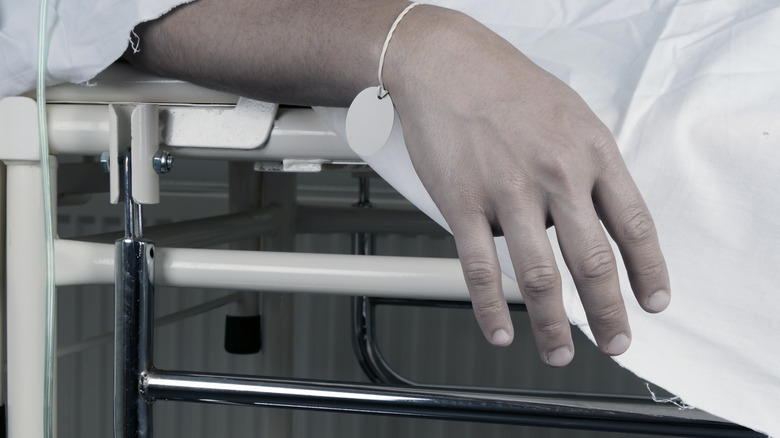Here's What Happens To Your Skin Just After Death
Death is an uncomfortable topic. Most of us might be alright with watching TV shows depicting someone dying and their body going through the usual process of decomposition, but when it comes to seeing it up close in someone we love, it becomes a whole other story.
What happens to your body when you die actually involves a long process that does not only include putrefaction, per Medical News Today. According to the director of the mortuary science program at Wayne State University, Mark Evely (via Newsweek), physical changes may include dehydration and livor mortis, while changes of a chemical nature include decomposition and rigor mortis. Some of these changes have an effect on the skin.
For example, right before rigor mortis happens about 2–6 hours after death, which is basically when your muscles stiffen up due to chemical changes in your body, your muscles actually relax. This can cause your skin to appear wrinkle-free and even sag. Your skin looks different during livor mortis too, which occurs as soon as 20 to 30 minutes after death.
Your skin turns a few different colors after death
Ever wondered why someone who died looks pale or their skin takes on a grayish hue? This process, called livor mortis, is due to the fact that gravity starts pulling all your blood downward. Your heart has stopped beating, so it's not pumping blood to all parts of your body like it used to when you were alive. As explained by forensic scientist M. Lee Goff (via Medical News Today), blood starts settling to the body's lowest portions due to gravity.
While the areas of your body that don't receive blood will look ashen, certain skin patches will appear red because of the blood pooling there, per Cleveland Clinic. These patches can take on a purplish tint over time. Your skin also shrinks after death, which is why hair and nails may look longer after death. Dehydration and the resulting retraction of your skin create the illusion of longer nails and hair, per UAMS Health.
Your skin could also take on a greenish hue when something called "marbling" occurs. Also called "suggillation," marbling happens when the deoxygenated blood pooled low in your body mixes with hydrogen sulfide, a gas that collects in your body's cavities after death. This is responsible for the greenish tint on your skin when you die. Your skin also comes off your body after death, when the top layer (epidermis) separates from the bottom layer (dermis). This part of the process is also known as skin slippage.
Knowing about the decomposition process helps reduce the fear of death
While the entire subject of what happens in the final moments before death and what comes after can be unsightly and unpleasant at best, learning about it all can help you fear death less, shared mortician Caitlin Doughty in her book, "Smoke Gets in Your Eyes: And Other Lessons from the Crematory" (per Medical News Today). "We can do our best to push death to the margins, keeping corpses behind stainless-steel doors and tucking the sick and dying in hospital rooms," she wrote. "So masterfully do we hide death, you would almost believe we are the first generation of immortals."
At the very least, it might help you look at death differently and give you the strength to be there for a loved one in their final moments and perhaps even after. It might also help you appreciate the very natural process of death, and how our bodies (and skin) eventually join other living matter when we're either buried or cremated. Death is universal, and it's the one thing none of us can escape. Thus, there is a benefit to understanding its intricacies in greater detail.



